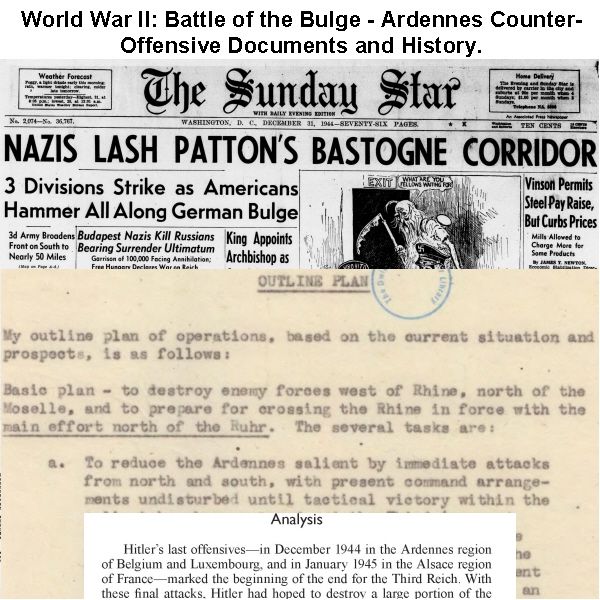
WWII: Battle of the Bulge – Ardennes Docs & History
$19.50
Description
The Ardennes Offensive: Timeline and Characters
This timeline focuses on the core events of the Battle of the Bulge as presented in the provided sources, primarily covering December 1944 to February 1945.
- December 15, 1944:Allied intelligence maps of the Ardennes Forest area show it “devoid of Axis units opposing the U.S. forces,” indicating a significant intelligence failure prior to the German offensive.
- December 16, 1944:German Offensive Begins: German forces launch a surprise attack in the Ardennes region, pushing into France, Luxembourg, and Belgium. This offensive is launched on a day when weather conditions prevent the use of Allied airplanes.
- The “bulge” in the front line, which gives the battle its name, begins to form.
- British Field Marshal Bernard Law Montgomery is given temporary command of the US First Army and the US Ninth Army (which holds up the German advance to the north of the Bulge) by General Eisenhower.
- December 17, 1944:Newspaper coverage from around the United States on the Battle of the Bulge begins.
- Allied Air Force operations report for December 17-27, 1944, begins.
- December 18-26, 1944:III Corps attack to relieve American soldiers surrounded at Bastogne, with Field Artillery providing support.
- December 19, 1944:Operations of the 423rd Infantry (106th Infantry Div) in the vicinity of Schonberg during the Battle of the Ardennes (December 16-19, 1944).
- December 23, 1944:Surface meteorological charts show a modified cold maritime polar air mass over the Ardennes-Eifel area.
- The 75th Infantry Division begins its combat in the Ardennes (December 23, 1944 – January 27, 1945).
- December 24, 1944:General Eisenhower’s diary entry summarizes events up to this point, a week after the battle began.
- December 31, 1944:General Eisenhower’s diary entry summarizes German action to date.
- January 1, 1945:War Department Daily Operational Summaries begin for January 1, 1945, to February 1, 1945.
- First ten days of January 1945:A final German offensive strikes XV Corps of the Seventh U.S. Army in the Vosges Mountains, south of Third Army in Lorraine. The 44th Infantry Division defends east of Sarreguemines.
- January 6, 1945:The 44th Division commander “castles” his forces and makes limited counterattacks, spoiling renewed German attacks in the Vosges Mountains.
- January 12-20, 1945:Battle of Hatten Rittershoffen involving the 14th Armored Division.
- January 16, 1945:Notes on the Bastogne Operation by General George S. Patton, 3rd U.S. Army.
- January 25, 1945:The Ardennes-Alsace campaign is officially designated as ending.
- February 1, 1945:Twelfth Army Situation Maps end.
- War Department Daily Operational Summaries end.
- February 5, 1945:American newspaper coverage on the Battle of the Bulge ends.
- February 9, 1945:The 75th Infantry Division participates in the Colmar Pocket Battle (January 30 – February 9, 1945).
- July 26, 1945:Interview with German Generaloberst Alfred Jodl.
- August 12, 1945:Interview of German Lieutenant Colonel Otto Skorzeny, commanding officer for Operation “Greif.”
Cast of Characters
This list includes principle people mentioned in the sources, with brief bios based only on the provided information.
- Bernard Law Montgomery: British Field Marshal. At the beginning of the Battle of the Bulge, he was given temporary command of the US First Army and the US Ninth Army by General Eisenhower. He also submitted an “Outline Plan of Operations” to Eisenhower.
- Dwight D. Eisenhower: General, Supreme Commander of the Allied Expeditionary Force in Europe. He made the decision to give Montgomery temporary command of US forces at the start of the battle. His diary entries from December 24 and December 31, 1944, summarize events during the battle. Oral history interviews conducted by the Dwight D. Eisenhower Presidential Library are mentioned.
- George S. Patton Jr.: General, commander of the U.S. Third Army. He provided “Notes on Bastogne Operation” on January 16, 1945. Academic studies analyze his operational battle command, leadership, decision-making, information assimilation, visualization, conceptualization, and communication, particularly in the context of the Battle of the Bulge and his relationship with his primary staff.
- Alfred Jodl: German Generaloberst. Interviewed on July 26, 1945, regarding the Battle of the Bulge.
- Otto Skorzeny: German Lieutenant Colonel, commanding officer for Operation “Greif.” Interviewed on August 12, 1945. Operation Greif was a German commando unit disguised as American soldiers intended to infiltrate behind American lines.
- William Hood Simpson: Senior United States Army officer. Commanding General of the U.S. Ninth Army in Western Europe during the final stages of World War II. An oral history interview with him is among the source documents.
- Thomas J. Betts: Brigadier General. Served as Intelligence Officer for SHAEF (1944-May 1945) and Director of Intelligence, U.S. Group. An oral history interview with him is among the source documents.
- John William Leonard: Lieutenant General. Commander of the 9th Armored Division. An oral history interview with him is among the source documents.
- Elwood Richard Quesada: United States Air Force Lt. General. An oral history interview with him is among the source documents.
- Raymond Hoffman: Colonel. An oral history interview with him is among the source documents.
- Robert E. Merriam: Former chief of the Ardennes section of the U.S. Army Historical Division. Author of “Dark December: The Full Account of the Battle of the Bulge” (1947), a thorough examination of the battle based on notes taken as the battle occurred, classified American and German records, and unique interviews with commanding officers from both sides.
- Roger Cirillo: Author of “Ardennes-Alsace” (2019), an official history covering December 16, 1944 – January 25, 1945.
- Bruce C. Clark: General in command. Author of “Battle of St. Vith A Concept in Defensive Tactics” (1974), a descriptive account of the military operation in St. Vith, including personal correspondence.
- Hugh M. Cole: Author of “The Ardennes Battle of the Bulge.” This work details German planning and execution, the Allied high command’s reaction, and emphasizes the role of American fighting men in small defensive battles and the crucial significance of holding the northern and southern shoulders and upsetting the enemy timetable at St. Vith and other battlefields.
- Martin Blumenson: Historian who wrote much of the published history of the Battle of Kasserine Pass, which is mentioned as a comparable battle to St. Vith. He is noted for blaming inexperience, inferior equipment, and poor doctrine for the defeat at Kasserine Pass.
- Dr. Michael Handel: His concept of “deception Ways and Means and the Attitude and Environment” is reviewed in a study on German deception prior to the Ardennes counteroffensive.
Inside the Battle of the Bulge – WWII Docs & History
World War II: The Battle of the Bulge – Ardennes Offensives Records and Historical Information
This collection comprises 6,715 pages of material, including official documents, geographical charts, media reports, post-operation analyses, formal historical accounts, testimonies from oral history interviews, and scholarly military research, all pertaining to the Ardennes Offensive/Counter-Offensive, also famously known as the Battle of the Bulge. On December 16, 1944, German forces launched an assault into the Ardennes region, advancing into territories of France, Luxembourg, and Belgium, catching the Allied forces in Europe off guard. This assault occurred six months following the successful D-Day landings and the invasion of Normandy, on a day when adverse weather conditions grounded all aircraft. The resultant deep penetration into the Allied front line, resembling a protuberance, subsequently gave the conflict its well-known moniker. The Battle of the Bulge stands as the deadliest engagement for the United States during World War II, claiming the lives of 19,000 American soldiers before the Allies successfully repelled the German advance and reclaimed the occupied territory.
ESSENTIAL HISTORICAL DOCUMENTS
A collection of 512 pages dedicated to crucial historical papers. This includes:
A telecommunication exchanged between British Field Marshal Bernard Law Montgomery and General Eisenhower at the commencement of hostilities, which temporarily assigned command of the U.S. First Army and the U.S. Ninth Army to Montgomery, successfully impeding the German northern thrust of the Bulge. General Eisenhower’s personal journal entry, dated one week into the conflict, summarizing events up to December 24. Correspondence from General Eisenhower to Bernard Montgomery concerning Montgomery’s proposed “Outline Plan of Operations.”
Eisenhower’s journal entry for December 31, 1944, which outlines German military activities up to that date. Daily operational summaries from the War Department, covering the period from January 1, 1945, through February 1, 1945. An interview conducted on July 26, 1945, with German Generaloberst Alfred Jodl. An interview from August 12, 1945, involving German Lieutenant Colonel Otto Skorzeny, who commanded “Operation Greif.”
Twelfth Army Tactical Maps
Fifty maps illustrate the deployment of 12th Army troops from December 15, 1944, until February 1, 1945. Each individual quadrangle sheet delineates the daily positions of the 12th Army Group and neighboring Allied units, as well as German formations. Significant military engagements can be pinpointed by dense clusters of unit symbols on these maps. These charts were utilized by U.S. commanders for assessing the campaign and formulating strategic plans. The maps reveal a failure in intelligence prior to the Battle of the Bulge. On the December 15, 1944, map, the Ardennes Forest area appears empty of any Axis units opposing U.S. forces. This specific map presents undeniable proof of Allied intelligence’s inability to detect Axis units before the Ardennes Offensive. Furthermore, as the Battle of the Bulge progressed and Allied intelligence capabilities improved, numerous Axis units that were previously undetected began to appear on the situation maps.
AMERICAN NEWSPAPER COVERAGE
One hundred sixty-two pages featuring articles from newspapers across the United States covering the Battle of the Bulge, spanning from December 17, 1944, to February 5, 1945.
Post-Action Assessments
Notes regarding the Bastogne Operation, prepared by General George S. Patton for the 3rd U.S. Army — dated January 16, 1945.
A report on the 84th Infantry Division’s involvement in the Battle of the Ardennes, from December 1944 to January 1945.The Ardennes campaign holds significant historical importance. The 84th Infantry Division has preserved detailed accounts of its past successes and challenges, which also serve as valuable educational material for military personnel in the future. Key segments describing the Battle of the Bulge cover the overarching context, daily existence in the Ardennes, the decisive moment, the seizure of Laroche, the progression from Les Tailles to Dinez, the journey from Beho to Gouvy to Ourthe, and a concluding summary.
A narrative detailing the activities of the Allied Air Forces between December 17th and 27th, 1944.
Historical log from the S3 (Operations) section of the 743rd Tank Battalion.
The narrative of the 82nd Airborne Division’s involvement in the Ardennes offensive within Belgium, spanning from December 1944 to February 1945.
Combat record of the 75th Infantry Division, encompassing the Ardennes conflict from December 23, 1944, to January 27, 1945; the engagement at the Colmar Pocket between January 30 and February 9, 1945; and the struggle for the Ruhr region, occurring from March 31 to April 15, 1945.
AUTHORITATIVE HISTORICAL RECORD
“Ardennes-Alsace,” authored by Roger Cirillo and published in 2019, chronicles events from December 16, 1944, to January 25, 1945, in the Ardennes-Alsace region. “Bastogne,” published in 2010, recounts the initial eight days when the 101st Airborne Division found itself encircled by German troops. This work about Bastogne provides rare perspectives, documenting the direct experiences of servicemen who participated in the severe winter conflict. The writer dispels the uncertainties of combat through a clear account that vividly portrays the strategic approaches, operational methods, and command structures employed during the fight. This engagement severely hampered critical German supply routes to their frontline attacking units, thereby interrupting their offensive momentum and decelerating their progression. The result is a compelling illustration demonstrating how resolute command and acts of personal bravery can jointly lead to prevailing against hostile armies and adverse climatic conditions. “Battle of St. Vith: A Concept in Defensive Tactics,” published in 1974, provides a detailed chronicle of the military engagement at St. Vith, narrated by its commanding general, Bruce C. Clark. The book also contains private letters related to this narrative. An adapted version of this report appeared in the 1974 issue of the “Armor” magazine, under the title “The Battle for St. Vith: Armor in the Defense and Delay.” “The Ardennes Battle of the Bulge” by Hugh M. Cole. Summary: This book details the German forces’ conception and implementation of their offensive. It further recounts how the senior American and British commanders responded to neutralize the German strategy once the existence of the enemy advance was acknowledged. However, its primary focus is on the American soldier and the way he engaged in countless minor defensive engagements until the overwhelming German assault was hindered, redirected, its might diminished, and ultimately exhausted. It narrates the experiences of small military units—from fireteams and platoons to companies and even makeshift combined elements—who displayed bravery, resilience, and stubborn determination, frequently without intelligence, connectivity, or awareness of their comrades’ positions. Within a mere two weeks, the adversary was halted, and American forces were making preparations to recommence their advance.Although Bastogne is synonymous with this steadfast, courageous, and victorious defense, this document rightly highlights the critical importance of the initial American achievements in halting the offensive. This was accomplished by securing its northern and southern flanks and by disrupting the adversary’s schedule at St. Vith and numerous less recognized yet significant and pivotal engagement sites.
The U.S. Army Battlebook, titled “The Battle of the Bulge,” serves as a field guide for military personnel, detailing aspects such as the timelines of World War II and the Battle of the Bulge, Allied wartime conferences, the structure and disposition of Allied forces, the composition of the U.S. Army in December 1944, profiles of high-ranking Allied officers, the organizational framework and combat formations of German forces, the state of the German Army in December 1944, biographical details of leading German commanders, a comparison of military officer ranks, weaponry, the defense of Bastogne, data on casualties and medical statistics, recommended additional readings, and a glossary of terms and code names.
“Weather Effects During the Battle of the Bulge and the Normandy Invasion (1982)” provides an overview of the geographical features of the Ardennes-Eifel region. It also discusses how meteorological conditions influenced strategic choices regarding the ultimate assault date and the concentration of the German offensive force. Surface weather maps for December 16 and 23, 1944, are included, illustrating the presence of an altered cold maritime polar air mass above the Ardennes-Eifel sector at the commencement of the Battle of the Bulge.
“Victory TD, Northern France–Ardennes–Rhineland–Central Europe (1945)” chronicles the training and combat experiences of the 628th Tank Destroyer Battalion. This historical record was compiled by and intended for the soldiers who served with the battalion in active engagements across France, Belgium, Luxembourg, Holland, and Germany.
VERBAL RECORDINGS
Comprising 1,241 pages, these volumes contain the verbatim records of five spoken history interviews carried out under the auspices of the Dwight D. Eisenhower Presidential Library. These interviews feature:
General William Hood Simpson, a high-ranking officer in the United States Army, whose service was marked by notable achievements in both the First and Second World Wars. His most significant role was as the Commanding General of the U.S. Ninth Army on the Western Front in Western Europe during the concluding phase of World War II. Thomas J. Betts, Brigadier General, who functioned as an Intelligence Officer for SHAEF from 1944 to May 1945, and subsequently as the Director of Intelligence for the U.S. Group.
Lieutenant General John William Leonard, the commanding officer of the 9th Armored Division.
Elwood Richard Quesada, a Lieutenant General in the United States Air Force.
Colonel Raymond Hoffman.
PUBLICATION
“Dark December: The Full Account of the Battle of the Bulge,” authored by Robert E. Merriam, who previously led the Ardennes section of the U.S. Army Historical Division, was released in 1947. This volume offers an exhaustive and captivating analysis of the Battle of the Bulge, written by a historian who had the distinct advantage of compiling observations while the conflict was unfolding and examining confidential American and German documents. Significantly, the publication presents unparalleled and vital intelligence, including specific information derived from the author’s personal conversations with high-ranking officers from both belligerent parties, with some of these accounts being the sole available records from those origins. The text also includes a partial quotation: “Should other former members of the Army’s historical division manage to uphold Mr.”Should Merriam’s work maintain its inspiring, analytical, and meticulous quality, we shall consider ourselves fortunate. “Dark December” comes highly recommended for anyone with even a passing interest in the conflict. —New York Times
The publication effectively debunks several prevalent misconceptions that have incorrectly gained widespread acceptance. —Arthur Schlesinger, Jr., Booklist
“Dark December” holds a distinguished place within the genre of war literature. Each section is substantiated by concrete evidence, rather than unreliable wartime speculation. While possessing sufficient technical depth for experts and ample precision for historians (indeed, representing historical writing at its finest), the text remains clear and accessible for a general audience. —New York Herald Tribune
SCHOLARLY MILITARY RESEARCH
Featuring 2,588 pages of scholarly military analyses and investigative documents originating from institutions such as the U.S. Army War College, the Army Command and General Staff College, the School of Advanced Military Studies, the Combat Studies Institute, the U.S. Army Concepts Analysis Agency, and The Armored School, among others. Comprises:
The Defeat at the Battle of Kasserine Pass: A Question of Perspective (2016)
Summary: Historical accounts frequently portray the Battle of Kasserine Pass as a humiliating setback for American forces in their inaugural significant engagement against Germany during World War II; certain historians even predict initial defeats in all major American conflicts. Martin Blumenson authored a considerable portion of the widely available historical record regarding this battle. He attributes the Kasserine Pass defeat to a combination of inexperience, substandard gear, and inadequate tactical principles. This paper contends that Blumenson’s description of the battle is inaccurate. When analyzed on an equivalent scale, the Battle of Kasserine Pass bears resemblances to the Battle of St. Vith. Consequently, Kasserine Pass and St. Vith ought to be categorized similarly. The ULTRA program’s declassification took place after a significant portion of its historical documentation had already been released. The absence of information from the ULTRA intercepts necessitates additional investigation to ascertain the impact that preserving the ULTRA secret had on the documented history of World War II.
Intelligence Insights from the Battle of the Bulge for Future Army Operations (1999)
Summary: Some commentators assert that military intelligence can no longer function primarily as an organization founded on established doctrine. They suggest that technological advancements are so rapid that “technology will dictate, and doctrine will adapt, our intelligence activities.” This study investigates the intelligence activities of the Third Army, focusing chiefly on the period from September to December 1944, preceding the Battle of the Bulge, to identify valuable takeaways. The document outlines ten historical principles that form the foundation for current intelligence doctrines and could serve as essential tenets for intelligence strategy and operations in the future military (‘Army After Next’). The paper subsequently contends that technological progress should not dictate intelligence operations. Instead, it posits that highly skilled intelligence specialists, those who have delved into historical events and possess a grasp of doctrine and the intelligence aspects of the operational environment, will be capable of producing actionable intelligence for commanders.
General George S. Patton Jr.: A Virtuoso of Operational Battle Command. Enduring Lessons for Command Derived from His Leadership (1997)
Summary: This specialized study explores the contributions of General George S. Patton, Jr. to the field of operational command in battle. The operational dynamics of battle command are composed of six key components: leadership, the process of making decisions, the absorption of information, the ability to visualize, the formation of concepts, and effective communication.The principles governing these operational elements were expertly utilized by General Patton. This scholarly work elucidates and illustrates the operational characteristics of Battle Command, specifically as implemented by General Patton during his leadership of the Third Army. Initially, the document explores the command and control structures of the Third Army, alongside General Patton’s interactions with his senior staff members. Subsequently, the text delineates and offers illustrations for each aspect of Battle Command, drawing upon General Patton and his staff as a case study. German Commando Actions during the Ardennes Campaign of 1944 (1994)
Abstract: This research presents a historical examination of the specialized German military operations that supported their broader Ardennes offensive. The investigation specifically examines two significant specialized military undertakings by the Germans: Operations “Greif” and “Stoesser.” Operation Greif involved a German effort to insert a commando force, masquerading as American servicemen, into the rear areas of the U.S. forces. Operation Stoesser, the final German paratrooper deployment of the conflict, aimed to seize crucial intersections located beyond the American front lines. These particular operations were unsuccessful due to deficiencies in their planning, insufficient readiness, and poor integration between special forces and regular military units. Such difficulties, compounded by insufficient time for readiness, led to the creation of two improvised units that proved incapable of fulfilling their main objectives, despite the operations themselves demonstrating daring, inventiveness, and adaptability. This analysis further investigates the strategic context, developmental phases, readiness measures, and execution of these initiatives, along with their influence on the entire military campaign. Additionally, the research explores the principal insights gained from these two operations. Finally, the paper investigates how these teachings might apply to the contemporary United States armed forces. Analysis of Anti-Armor Defense Information (A2D2), Volume III – U.S. Anti-Tank Defensive Operations at Dom Butgenbach, Belgium (1990)
Abstract: The primary goal of this project was to gather historical information regarding a minimum of five engagements where American forces defended against hostile armored vehicles. This collected information will contribute to a collaborative United States and United Kingdom study assessing the decline in effectiveness of anti-armor defenses during actual combat scenarios. A detailed account of thirteen separate combat engagements from the confrontation at Dom Butgenbach, Belgium, in December 1944 is provided. These military engagements are presented both as descriptive accounts and within data tables, showcasing all relevant collected facts. Project Reviewing German Deception During the Ardennes Offensive: Insights for High-Ranking Commanders (1989)
Following the unsealing of World War II intelligence materials, including “Ultra,” the notion of strategic deception has been subjected to thorough examination. The aim of this document is to analyze the Allied response to German deceptive maneuvers preceding the Ardennes counteroffensive, with a view to identifying potential teachings for high-level commanders. Dr. Michael Handel’s frameworks on “Deception Ways and Means” and “Attitude and Environment” are evaluated against the historical context to ascertain any insights a prospective senior leader ought to consider regarding deception as an aspect of their career advancement. Battlefield Intelligence Preparation and Forecasting Capabilities (1986)
Abstract: This scholarly paper investigates the capacity of Intelligence Preparation of the Battlefield (IPB) to generate foretelling intelligence.Intelligence Preparation of the Battlespace serves as the fundamental basis for immediate tactical information and holds considerable significance in devising pre-engagement battle strategies. It is widely anticipated that Intelligence Preparation of the Battlefield will offer the necessary groundwork for forecasting adversary lines of action. Contemporary intelligence principles affirm the notion that Intelligence Preparation of the Battlefield is capable of ascertaining the likeliest enemy maneuvers. This research endeavors to determine if Intelligence Preparation of the Battlefield truly furnishes the means to anticipate hostile activities.
Field Artillery Support for 3 Corps Attack 18-26 December 1944 (1985)
This treatise presents a historical examination concerning the deployment of field artillery during the III Corps’ assault, aimed at relieving American forces encircled at Bastogne. The established principles and instructional methods of the artillery detachments are scrutinized within this context. This review serves to assess the operational methodologies employed by the III Corps’ artillery units. The evolution and advancement of the III Corps’ artillery capabilities are traced from their inaugural combat engagement in Metz, extending through their deployment during the nascent phases of the Battle of the Bulge. This scholarly paper delves into the training conducted before the conflict, the prevailing military doctrine of that time, and the formation, evolution, and utilization of the Field Artillery Group. The measures undertaken by the III Corps both before and throughout the assault are critically examined to scrutinize their operational tactics and adherence to the contemporary military tenets.
Battle of the Vosges Mountains – Defense, Winter (1984)
Summary: In early January 1945, specifically during its first ten days, the XV Corps, part of the Seventh U.S. Army, faced a decisive German assault in the Vosges Mountains, located to the south of the Third Army’s position in Lorraine. The 44th Infantry Division maintained defensive positions east of Sarreguemines and was initially pushed back along its right flank, specifically in the area held by the 71st Infantry Regiment. Early attempts at counter-offensives, launched by battalion-sized forces, were unsuccessful, leading the corps commander to deploy Combat Command L of the 2nd Free French Armored Division in an effort to re-establish the battle line. Combat Command L successfully recaptured Gros-Rederching; however, it subsequently appeared to have mistakenly engaged soldiers from the 44th Division and consequently failed to hinder German infantry from re-infiltrating the settlement. Following these events, the commander of the 44th Division strategically repositioned his units, withdrawing and reorganizing troops from his left and central sectors to focus two strengthened regiments on his right wing. These reinforced regiments launched restricted counter-offensives on January 6th and subsequent days, thereby disrupting fresh German assaults. Additional related works encompass:
The Downfall of German Logistics During the 1944 Ardennes Offensive (2000)
An Analysis of Strategic Leadership and Decisions in the Battle of the Ardennes (1999)
Intelligence Insights Gained from the Battle of the Bulge for the Future Army (1999)
General George Patton, Jr.’s Application of Operational Art During the Battle of the Bulge (1994)
The Efficacy of United States Military Operations.The 28th Infantry Division’s activities from September to December 1944 (1994)
An examination of Jomini’s theories, lines of operation, decisive points, campaign planning, theater operations, and operational maneuver in the context of the Ardennes and the Battle of the Bulge (1988)
The application of operational art within the 1944 Ardennes Campaign (1987)
The defensive operations of the 101st Airborne Division at Bastogne (1986)
The 1111th Engineer Group’s involvement in the Bulge and the broader role of engineers in Airland Battle doctrine (1985)
A Master’s Thesis presenting a case study of the “Lucky Seventh” Division in the Bulge, serving as an analysis for the Airland Battle (1985)
The engagement at St. Vith, focusing on the defense and subsequent withdrawal by an encircled force (1984)
The Ardennes: The Battle of the Bulge’s winter defense and counterattack phases, from December 16, 1944, to January 3, 1945 (1984)
The conflict at St. Vith, Belgium, between December 17 and 23, 1944, as a historical illustration of armored units in a defensive posture (1969)
A personal account from a Battalion Operations Officer detailing the actions of the 423rd Infantry Regiment (106th Infantry Division) near Schonberg during the Battle of the Ardennes (Ardennes-Alsace Campaign) from December 16-19, 1944 (1950)
The Battle of Hatten-Rittershoffen, highlighting the 14th Armored Division’s participation from January 12-20, 1945 (1950)
Armored forces at Bastogne (1949)
The operations of the 10th US Armored Division within the Saar-Moselle Triangle (1949)
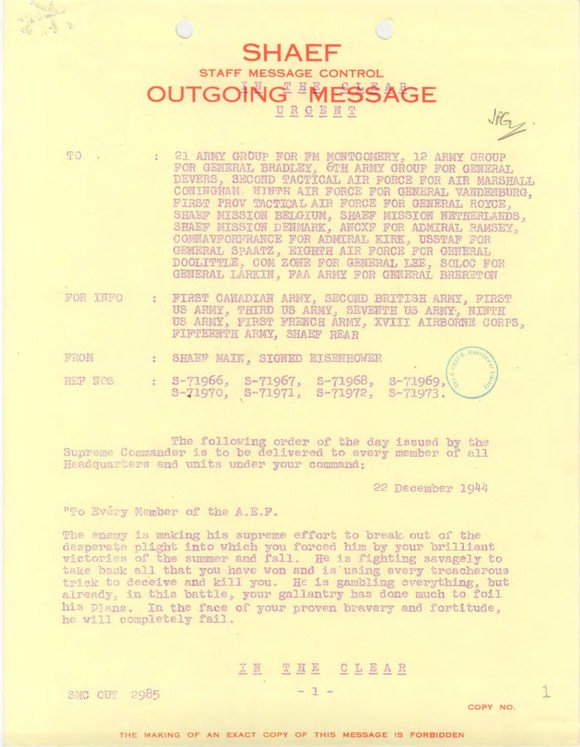
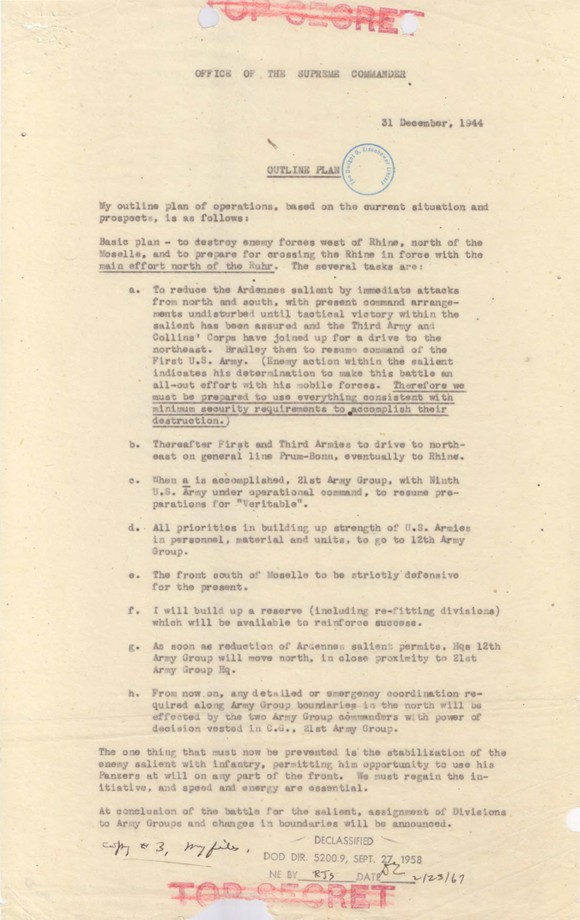
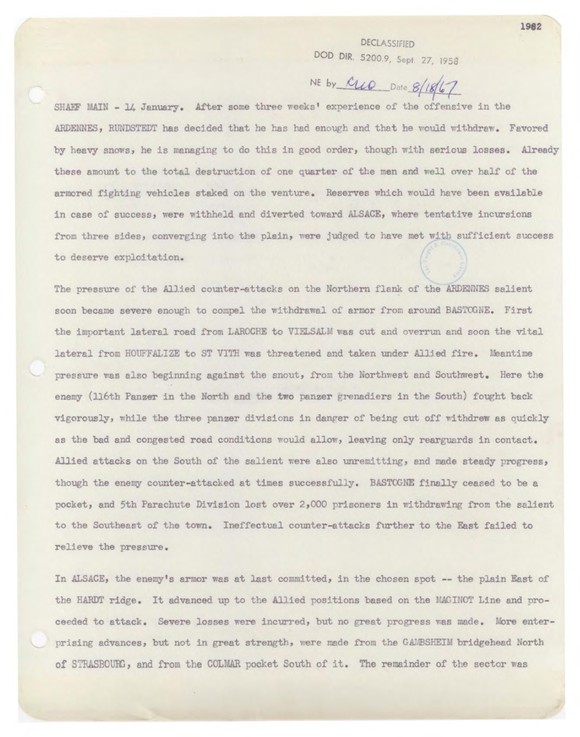
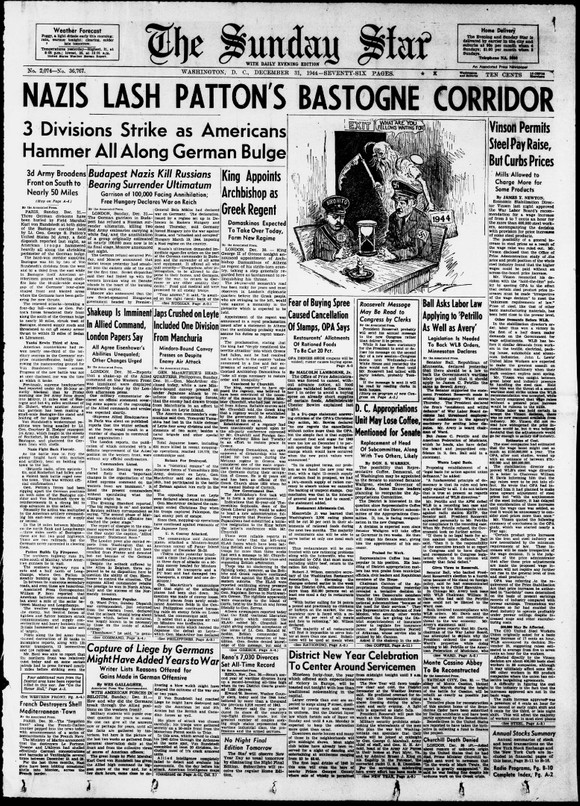
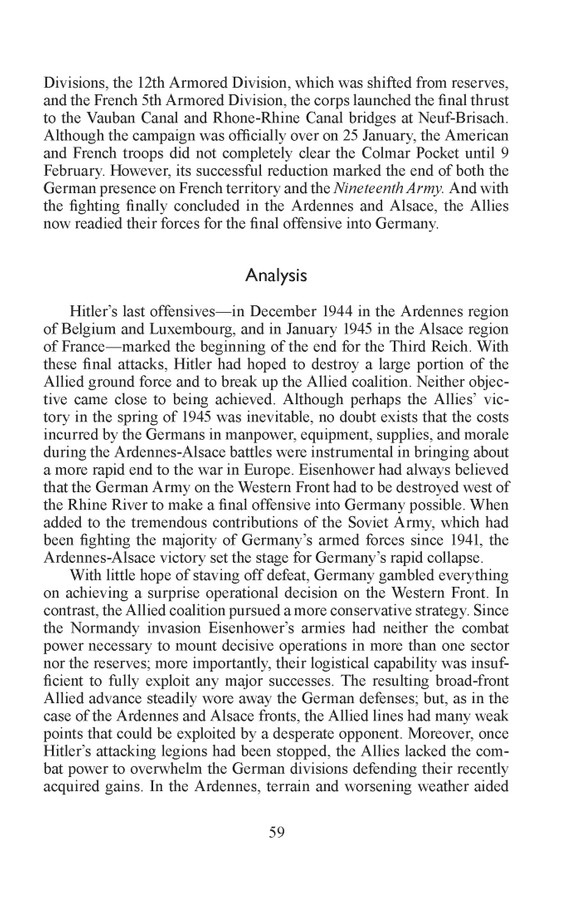

Related products
-
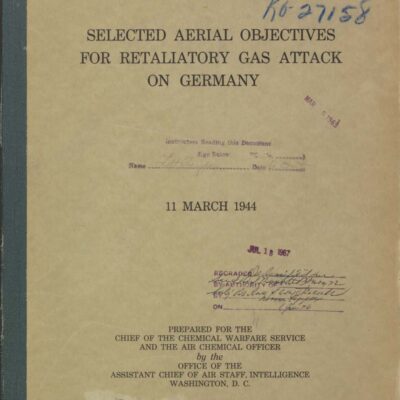
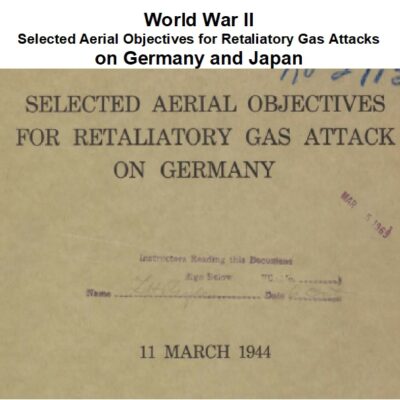
World War II: Targeted Aerial Objectives for Retaliatory Gas Attacks on Germany and Japan
$3.94 Add to Cart -
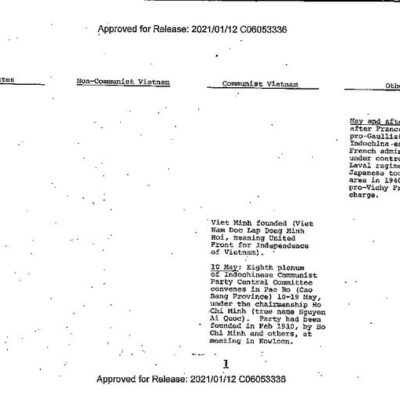
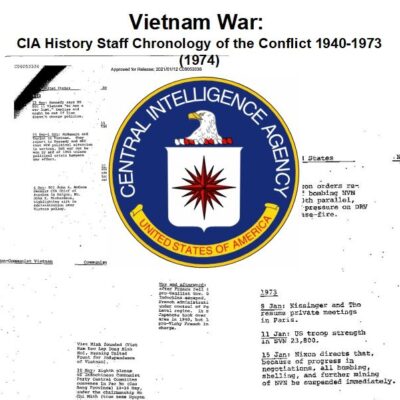
Vietnam War: CIA Chronology of the Conflict, 1940-1973 (1974)
$1.99 Add to Cart -

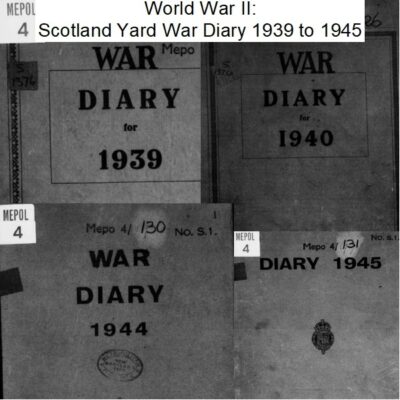
World War II: Scotland Yard War Diary from 1939 to 1945
$3.94 Add to Cart -
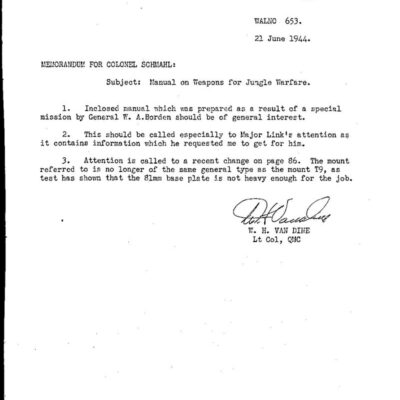
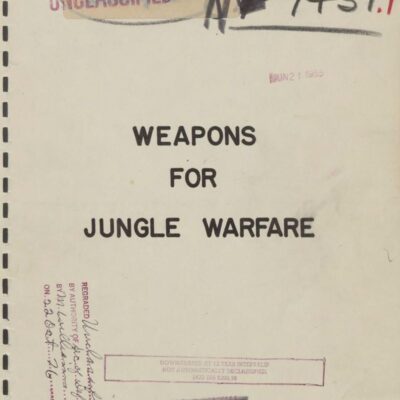
World War II Manual on Weapons for Jungle Warfare (1944)
$1.99 Add to Cart